Western Striker - Electric #99030-1/99031-1/99035-1/99039-1 (Serial #170711-Higher) Installation guide
- Category
- Spreader
- Type
- Installation guide
This manual is also suitable for

This document supersedes all editions with an earlier date.
August 1, 2018
Lit. No. 43767, Rev. 02
Striker™ Hopper Spreader
with Electric Motors
#99030-1, 99031-1, 99035-1, 99039-1
Installation Instructions
This manual is for WESTERN® Striker Hopper Spreaders
with serial numbers beginning with 170711 and higher.
CAUTION
Read this document before installing or
operating the spreader.
Western Products, PO Box 245038, Milwaukee, WI 53224-9538 • www.westernplows.com


Lit. No. 43765/43767, Rev. 02 3 August 1, 2018
SAFETY DEFINITIONS
NOTE: Indicates a situation or action that can lead
to damage to your spreader and vehicle or other
property. Other useful information can also be
described.
SAFETY
WARNING/CAUTION LABELS
Become familiar with and inform users about the
warning and caution labels on the spreader.
NOTE: If labels are missing or cannot be read, see
your sales outlet.
CAUTION
Indicates a potentially hazardous situation
that, if not avoided, may result in minor or
moderate injury. It may also be used to alert
against unsafe practices.
WARNING
Indicates a potentially hazardous situation
that, if not avoided, could result in death or
serious personal injury.
CAUTION
Do not lift spreader by this member.
Lifting here could cause personal
injury and property damage.
67272
Both
Sides
Caution Label – Lifting
Warning/Caution Label
Warning Label – Rear Camera

Lit. No. 43765/43767, Rev. 02 4 August 1, 2018
SAFETY
CAUTION
• Do not operate a spreader in need of
maintenance.
• Before operating the spreader, reassemble
any parts or hardware removed for cleaning
or adjusting.
• Before operating the spreader, remove
materials such as cleaning rags, brushes,
and hand tools from the spreader.
• While operating the spreader, use auxiliary
warning lights, except when prohibited by law.
• Tighten all fasteners according to the
Torque Chart. Refer to Torque Chart for the
recommended torque values.
CAUTION
Disconnect electric and/or hydraulic power
and tag out if required before servicing or
performing maintenance.
NOTE: Lubricate grease fi ttings after each use.
Use a good quality multipurpose grease.
PERSONAL SAFETY
• Remove ignition key and put the vehicle in park or
in gear to prevent others from starting the vehicle
during installation or service.
• Wear only snug-fi tting clothing while working on
your vehicle or spreader.
• Do not wear jewelry or a necktie, and secure long
hair.
• Wear safety goggles to protect your eyes from
battery acid, gasoline, dirt, and dust.
• Avoid touching hot surfaces such as the engine,
radiator, hoses, and exhaust pipes.
• Always have a fi re extinguisher rated BC handy,
for fl ammable liquids and electrical fi res.
SAFETY PRECAUTIONS
Improper installation and operation could cause
personal injury and/or equipment and property damage.
Read and understand labels and the owner's manual
before installing, operating, or making adjustments.
WARNING
• Driver to keep bystanders minimum of
25 feet away from operating spreader.
• Before working with the spreader, secure all
loose-fi tting clothing and unrestrained hair.
• Before operating the spreader, verify that all
safety guards are in place.
• Before servicing the spreader, wait for
conveyor and spinner to stop.
• Do not climb into or ride on spreader.
WARNING
Do not install the control for this product in
the deployment path of an air bag. Refer to
vehicle manufacturer's manual for air bag
deployment area(s).
CAUTION
If rear directional, CHMSL light, or brake
stoplights are obstructed by the spreader, the
lights shall be relocated, or auxiliary directional
or brake stoplights shall be installed.
CAUTION
During the hopper spreader installation
we recommend the addition of an OSHA
compliant Backup Alarm. This alarm is
required for OSHA governed employers.
WARNING
Overloading could result in an accident or
damage. Do not exceed GVWR or GAWR
ratings as found on the driver-side vehicle door
cornerpost. See Loading section to determine
maximum volumes of spreading material.
CAUTION
DO NOT leave unused material in hopper.
Material can freeze or solidify, causing unit
to not work properly. Empty and clean after
each use.
WARNING
Vehicles <10,000 lb GVWR: Obstructing the
visibility from the vehicle's rear camera could
result in serious injury or damage. An auxiliary
camera system shall be installed if the
vehicle's rear camera is removed or blocked.

Lit. No. 43765/43767, Rev. 02 5 August 1, 2018
SAFETY
FIRE AND EXPLOSION
Be careful when using gasoline. Do not use gasoline
to clean parts. Store only in approved containers away
from sources of heat or fl ame.
CELL PHONES
A driver's fi rst responsibility is the safe operation of
the vehicle. The most important thing you can do
to prevent a crash is to avoid distractions and pay
attention to the road. Wait until it is safe to operate
Mobile Communication Equipment such as cell phones,
text messaging devices, pagers, or two-way radios.
VENTILATION
BATTERY SAFETY
NOISE
Airborne noise emission during use is below 70 dB(A)
for the spreader operator.
VIBRATION
Operating spreader vibration does not exceed 2.5 m/s2
to the hand-arm or 0.5 m/s2 to the whole body.
TORQUE CHART
1/4-20 109 154
1/4-28 121 171
5/16-18 150 212
5/16-24 170 240
3/8-16 269 376
3/8-24 297 420
7/16-14 429 606
7/16-20
9/16-12
9/16-18
5/8-11
5/8-18
3/4-10
3/4-16
7/8-9
7/8-14 474 669
644 9091-8
1-12 704 995
1/2-13
1/2-20
11.9
13.7
24.6
27.3
43.6
26.9
53.3
93
148
49.4
69.8
77.9
106.4
120.0
8.4
9.7
17.4
19.2
30.8
35.0
49.4
55.2
75.3
85.0
M6 x 1.00
M12 x 1.75
M8 x 1.25
M14 x 2.00
M10 x 1.50
M27 x 3.00
M22 x 2.50
M30 x 3.50
M24 x 3.00
M20 x 2.5011.1
19.5
38.5
67
107
7.7
613
778
1139
1545
450
428
562
796
1117
M33 x 3.50
M36 x 4.00
2101
2701
1468
1952
325
M16 x 2.00 231
167
M18 x 2.50 318222
Recommended Fastener Torque Chart
Size Size
Torque (f t- lb)
Grade
5
Grade
8
Metric Fasteners Class 8.8 and 10.9
These torque values apply to fasteners
except those noted in the instructions.
Torque (f t- lb)
Grade
5
Grade
8
Size Size
Torque (f t- lb)
Class
8.8
Class
10.9
Torque (f t- lb)
Class
8.8
Class
10.9
Inch Fasteners Grade 5 and Grade 8
CAUTION
Batteries normally produce explosive gases,
which can cause personal injury. Therefore,
do not allow fl ames, sparks, or lit tobacco
to come near the battery. When charging or
working near a battery, always cover your
face and protect your eyes, and also provide
ventilation.
• Batteries contain sulfuric acid, which burns
skin, eyes, and clothing.
• Disconnect the battery before removing or
replacing any electrical components.
CAUTION
Read instructions before assembling. Fasteners
should be fi nger tight until instructed to
tighten according to torque chart. Use standard
methods and practices when attaching
spreader, including proper personal protective
safety equipment.
WARNING
Vehicle exhaust contains lethal fumes. Breathing
these fumes, even in low concentrations,
can cause death. Never operate a vehicle in
an enclosed area without venting exhaust to
the outside.
WARNING
Gasoline is highly fl ammable and gasoline
vapor is explosive. Never smoke while
working on vehicle. Keep all open fl ames
away from gasoline tank and lines. Wipe up
any spilled gasoline immediately.

Lit. No. 43765/43767, Rev. 02 6 August 1, 2018
LOADING
MATERIAL WEIGHTS
Density
Material (lb/ft3)(lb/yd
3)(kg/m
3)
Salt 80 2160 1282
Sand 100 2700 1602
Material densities are approximate and are based on dry,
loose material. It is the responsibility of the operator to
know the weight of the material to be spread and the vehicle
carrying capacity.
This document covers vehicles that have been
recommended for carrying the hopper spreader. Please
see your local dealer for proper vehicle applications.
CERTIFICATION
WARNING
Overloading could result in an accident or
damage. Do not exceed GVWR or GAWR as
found on the driver-side cornerpost of vehicle.
WARNING
New untitled vehicle installation of a spreader
requires National Highway Traffi c Safety
Administration altered vehicle certifi cation
labeling. Installer to verify that struck load of snow
or ice control material does not exceed GVWR
or GAWR rating label and complies with FMVSS.
CAUTION
Read and adhere to manufacturer's ice-control
material package labeling, including Material
Safety Data Sheet requirements.
Hopper
Model
Load Volume (yd3)
ABCD
7 ft (1.7 yd3)2.11.71.30.5
8 ft (2.0 yd3)2.41.91.50.6
9 ft (3.0 yd3)3.53.01.70.7
9 ft (4.5 yd3)4.84.23.41.5
A
B
C
D
LOAD VOLUME
A
B
C
D
7' Hopper
8' and 9' Hoppers
Hopper
Model
Overall
Length (in)
Bed
Length (in)
Empty
Weight (lb)
Overall
Width (in)
Bed
Height (in)
Capacity
Struck (yd3)
7 ft (1.7 yd3)10686.5640 50 37.5 1.7
8 ft (2.0 yd3)119 96 761 50 39.5 1.9
9 ft (3.0 yd3)149 108 846 50 40.6 3.0
9 ft (4.5 yd3)130 115 960 70 47 4.2
SPREADER SPECIFICATIONS
A: Rounded Load
B: Struck Load
C: Second Bump
D: First Bump
CAUTION
Never use wet materials or materials with
foreign debris with any of these spreaders.
These units are designed to handle dry, clean,
free-fl owing material.

Lit. No. 43765/43767, Rev. 02 7 August 1, 2018
NOTE: Periodically throughout the snow and ice
control season, verify that mounting devices
are secure.
INSTALL INVERTED V
1. Remove and retain the linch pins securing the top
screens. Remove the top screens and set them
aside.
2. The inverted V is mounted underneath the hopper
cross beams for shipping. Detach the inverted V
from the cross beams and set it aside.
3. Remove the chute from the hopper and set it on its
side. Two people are recommended for this step,
as the chute weighs more than 70 pounds.
4. Align the holes in the legs of the inverted V with
the holes in the hopper sides. Install the inverted V
to the hopper using the supplied 3/8" x 1" carriage
bolts, inserting the bolts from the inside.
Inverted V
Carriage Bolts
INSTALL TOP SCREEN BRACKETS
1. Install a top screen bracket at each end of
the spreader cross beams using the supplied
1/4" x 3/4" carriage bolts, 1/4" washers, and
1/4" locknuts.
2. Retain the linch pins supplied with the top screen
brackets. The top screens and linch pins will be
installed later.
MOUNTING THE SPREADER
1/4" x 3/4"
Carriage Bolt
1/4" Washer
1/4" Locknut
Spreader
Cross Beam
Top Screen
Bracket

Lit. No. 43765/43767, Rev. 02 8 August 1, 2018
5. Using the holes in the four hopper support legs as
a template, mark mounting hole positions on the
truck bed. Move the spreader temporarily to allow
access, and drill 5/8" holes as marked.
NOTE: Pay special attention when drilling or
clamping dissimilar metals to aluminum bodies.
Galvanic corrosion can occur if not handled
properly. Contact vehicle manufacturer for
recommended attachment practices.
6. Move the spreader back into position. Install the
spreader to the truck bed using four 5/8" Grade 5
bolts as required by the vehicle application,
5/8" fl at washers on both sides, and 5/8" locknuts.
(Fasteners supplied by installer.)
If the mounting holes are not directly over
the truck box supports, the truck bed must
be braced to the frame to prevent buckling or
deforming the truck bed. Accessory mounting
bars are available for installations that require
additional bracing. Contact your authorized dealer.
7. Remove the cable tie holding the wire harness
to the conveyor chain. Connect the vehicle-side
harness to the hopper-side harness.
INSTALL HOPPER IN TRUCK BED
1. Remove the vehicle tailgate.
2. Remove the wood shipping rails from the hopper
legs.
3. Using slings or chains, lift the spreader by the four
diagonal corner rails and move it into the truck bed.
4. Center the spreader from side to side. Shift the
spreader forward or backward to a position that
will allow the chute, once installed, to overhang
the rear of the truck and the bumper. With two
people, trial-fi t the chute to check for clearance.
MOUNTING THE SPREADER
WARNING
Spreader shall be bolted to vehicle frame.
Do not rely on the tie-down chains or straps
alone to hold spreader in vehicle.
CAUTION
Before drilling holes, check to be sure that no
vehicle wiring or other components could be
damaged.
Mounting Holes
(one per leg)
Use all four rails
when lifting.
CAUTION
Before lifting, verify that the hopper is empty
of material. The lifting device must be able to
support the spreader's weight as shown in
the spreader specifi cations table.

Lit. No. 43765/43767, Rev. 02 9 August 1, 2018
8. Install the top screens, using the retained linch
pins to secure the screens to the previously
installed brackets.
Construct Sill Spacer
Measure the distance from the front end of the hopper
sill to the front of the truck bed and make a spacer
from 2" x 8" lumber to fi t that area.
Failure to install a spacer could result in damage
to the spreader.
Minimum
Clearance 3"
Front of
Truck Bed
Measure distance
Spacer
Built to Fit
Measured
distance.
2"x 8" Construction
Fit to vehicle.
18"
INSTALL CHUTE
The chute comes in two lengths.
• 7' and 8' Hoppers: Short chute confi guration is
standard. The chute extends 14.75" below the
truck bed and will fi t most pickup trucks.
• 9' Hoppers: Long chute confi guration is standard.
The chute extends 26.75" below the truck bed.
Required for fl at bed and dump truck installations.
Confi rm/Adjust Chute Length
Ideal spinner height is 12"–18" above the ground. For
some installations the chute length may need to be
adjusted to achieve the desired spinner height.
If no length adjustment is required, go to "Install Chute
to Spreader."
Changing Short Chute to Long Confi guration
Extending a short chute requires installation of a Chute
Middle Section Kit (available from authorized dealer).
Changing Long Chute to Short Confi guration
The chute must be separate from the spreader.
1. Remove the six fasteners that attach the lower
and middle chute sections and the four fasteners
that attach the middle and upper chute sections.
Remove the middle section.
2. Install the lower chute section to the upper section
using the four upper fasteners removed in Step 1.
3. Remove the back cover of the upper chute section
to access the spinner power cable. Loop up the
excess length of the cable and secure it to the
corner bracket using cable ties.
Remove
middle
section.
Reinstall
fasteners
(two per side).
MOUNTING THE SPREADER

Lit. No. 43765/43767, Rev. 02 10 August 1, 2018
MOUNTING THE SPREADER
Install Chute to Spreader
Before installing the chute to the hopper, confi rm that
the spinner turns freely. If it does not, refer to "Spinner
Belt Alignment" in the Final Adjustments section of
these instructions.
1. Pick up the chute from each side and slide the
chute-side hinges over the hopper-side hinges.
Two people are recommended for this step.
2. Line up the hinge pivot holes. Insert a
1/2" x 8-1/4" chute pin on each side and secure
with a 3/32" x 2-1/4" cotter pin.
3. Connect the chute motor plug to the hopper
harness plug.
The chute can pivot on either pin to provide access to
the feed area of the hopper. An interlock prevents the
feed system from running when the chute is rotated to
either side or removed.
Hinge
Pivot Holes
Chute
(Pivot)
Pins
INSTALL TIE-DOWN STRAPS
Install tie-down straps from the tie-down loops on the
spreader body to the truck frame. Use one strap per
loop, pulling diagonally away from the hopper body.

Lit. No. 43765/43767, Rev. 02 11 August 1, 2018
WIRING AND HARNESS INSTRUCTIONS
Vehicle Battery Cable Installation
1. Remove the battery cables from the vehicle
battery.
2. Using the 1/4" x 3/4" cap screws, 1/4" fl at washers,
and /1/4" locknuts, mount the fuse holder near
the vehicle battery so that the 22" battery cable
can be installed from the POSITIVE (+) battery
terminal to the fuse holder. Install the fuse into the
fuse holder and hand tighten the nuts.
NOTE: Accessory 50" or 90" cables may be installed
in place of the standard 22" cable for applications
requiring a longer vehicle battery cable.
3. Attach one end of the 22" battery cable to the fuse
holder so that the ring terminal is on top of the
fuse. Replace the lock washer and nut.
4. Lay out a path for routing the vehicle battery
cable from the rear of the truck bed to the vehicle
battery. Make sure that the path avoids any hot,
sharp, or moving parts of the truck. Routing will
vary from truck to truck.
5. Route the vehicle battery cable as laid out in Step 4.
6. Using cable ties, secure the battery cable to the
truck. Verify that the harness cannot drop onto the
road when it is disconnected from the spreader.
7. Attach the vehicle battery cable red wire to the
other fuse holder stud so that the ring terminal is on
top of the fuse. Replace the lock washer and nut.
8. Torque the fuse holder nuts to 106–159 in-lb.
Snap the fuse holder cover into place.
9. Attach the other end of the 22" battery cable to
the POSITIVE (+) battery post.
10. Attach the vehicle battery cable black wire to the
NEGATIVE (–) battery terminal.
NOTE: When using the accessory 50" or 90"
battery cables, connect the black wire from the
vehicle battery cable to a ground bolt on the
vehicle frame or the engine. Clean away any paint
or dirt to ensure a good ground connection.
WIRING INSTRUCTIONS
Spreaders are shipped from the factory with the
spreader harness wired to the motor and spreader
module.
To properly wire the hopper spreader, follow this
recommended installation sequence:
1. Install the vehicle battery cable and control
harness included with the spreader, following the
steps given below.
2. Install the cab control as described under "Cab
Control Installation."
NOTE: Use dielectric grease on all electrical
connections.

Lit. No. 43765/43767, Rev. 02 12 August 1, 2018
WIRING AND HARNESS INSTRUCTIONS
5. Insert a rubber grommet into the hole.
6. Route the harness as laid out in Step 2.
7. Secure the vehicle control harness to the truck.
8. Attach the red wire to a switched accessory circuit.
Cab Control Installation
1. Confi rm that the chosen cab control mounting
position will not interfere with other equipment or
allow unintentional starting of the spreader.
2. Install the vehicle side of the mounting bracket
using three #10 x 3/8" Phillips head tapping
screws.
3. Install the control side of the bracket to the control
using four #8 x 3/8" Phillips head machine screws.
Vehicle Control Harness Installation
1. Plug the vehicle harness into the spreader harness.
2. Lay out a path for routing the vehicle control
harness from its attachment point on the vehicle
battery cable into the cab of the truck. Make sure
that the path avoids any hot, sharp, or moving parts
of the truck. Routing will vary from truck to truck.
3. Choose a cab control mounting location that can
be reached by the harness. The location must
be within easy reach of the vehicle operator
without restricting access to vehicle controls or
instrumentation.
Do not mount the control in areas prohibited
by the vehicle manufacturer for reasons of
crashworthiness. See the vehicle's body builder's
book, owner's manual, or service manual for
details. The shaded portions in the illustration
below show the most commonly restricted areas.
4. Drill a 5/8" hole in the fi re wall so that the vehicle
control harness can reach the desired cab control
location.
CAUTION
Before drilling any holes, check both sides
of the material for any wires, fuel lines, fuel
tanks, etc., that may be damaged by drilling.
CAUTION
Do not alter, modify, or install additional
components in shaded areas shown below.
Failure to comply may interfere with airbag
deployment or cause injury to operator in an
accident.
Control Side
(Control not shown.)
Vehicle Side
#10 x 3/8"
Tapping
Screw
#8 x 3/8"
Machine
Screw

Lit. No. 43765/43767, Rev. 02 13 August 1, 2018
4. Install the control side of the bracket to the vehicle
side using 1/4" x 1/2" Phillips head machine
screws, 1/4" nylon shoulder washers, 1/4" lock
washers, and 1/4" hex nuts.
5. Plug the vehicle control harness into the cab control.
Harness Plug Cover
Install the supplied harness plug cover by slipping the
loop end of the cover over the harness plug.
WIRING AND HARNESS INSTRUCTIONS
CENTER HIGH-MOUNTED STOPLIGHT
(CHMSL)
An LED center high-mounted stoplight is standard
equipment on all stainless steel hopper spreaders.
The orange wire from the spreader vehicle harness
is for the CHMSL. Splice the orange wire into an
existing CHMSL circuit wire tap. Location of the tap
varies according to specifi c vehicle model, and may be
located either in the cab or in the rear of the vehicle.
Always use the tap provided by the OEM.
DO NOT splice the orange wire into the wire coming
off the stoplight switch by the brake pedal. Splicing at
the stoplight switch may affect transmission shifting,
cruise control, or other vehicle functions.
For vehicles with a tap along the frame rail or at
the rear cross member:
1. Cut the tape holding the orange wire where it exits
the convoluted tubing.
2. Pull out the orange wire to the location where
the vehicle CHMSL tap is located. Cut a small V
notch in the tubing for the wire to exit. Pull the wire
through the V notch and tape the tubing on each
side of the exit point.
3. Trim any excess length from the orange wire and
splice the wire into the vehicle tap.
If the accessory License Plate Light Kit is not installed,
coil and cable-tie the brown wire away from any hot,
sharp, or moving parts.
ACCESSORY LICENSE PLATE LIGHT
To install the accessory License Plate Light, follow
the instructions included with the kit.
(Control not shown.)
1/4" Nylon
Shoulder
Washer
1/4" Lock
Washer
1/4" Hex Nut
1/4" x 1/2"
Machine Screw

Lit. No. 43765/43767, Rev. 02 14 August 1, 2018
ELECTRICAL COMPONENTS
+
_
Battery
Cab Control
4-Way Connector
Connectors
18 ga Shielded
Twisted-Pair Cable
4 ga Red
18 ga Black
4 ga Black
Connect to
Spreader Harness
To Vehicle CHMSL Signal
(tap located in cab)
To Vehicle CHMSL Signal
(tap located in rear of vehicle)
To Vehicle Park Light Tap, if License
Plate Light Kit accessory is installed
100A
Fuse
6 ga Red
18 ga Red
To Vehicle Switched Accessory
BRN
ORN
ORN
FEED
PN
BAT
SPIN
GND
B
To Conveyor
Cable
Assembly ACC Taps
Isolated
Stud Block
ACC Relay-Fuse
Mounting Bracket
To Chute
Present Switch
To License
Plate Light
ELECTRICAL CONTROL BOX
Spreader Module
To Spinner
Motor
To CHMSL
Accessory
Work Light
Switch
Conveyor
Switch
(both sides)
VEHICLE HARNESS DIAGRAM

Lit. No. 43765/43767, Rev. 02 15 August 1, 2018
FINAL ADJUSTMENTS
CONVEYOR PINTLE CHAIN TENSION
To check the conveyor chain tension, see whether the
chain is visible in the chain tension port. If the chain is
too tight, it will be above the port; if too loose, it will be
below the port.
If Conveyor Chain Is Too Loose
1. Loosen the two bearing mounting bolts on each
side of the conveyor idle roller at the cab end of
the hopper.
2. Loosen the jam nut on one of the idler take-up
bolts. Tighten the take-up bolt by turning it
clockwise while holding the jam nut. Repeat with
the opposite take-up bolt, tightening equally on
both passenger's side and driver's side until the
chain is in the middle of the chain tension port.
3. Tighten the bearing mounting bolts to 30 ft-lb.
Tighten the tensioner jam nuts.
If Conveyor Chain Is Too Tight
1. Loosen the jam nuts on both sides. Back off the
idler take-up bolt evenly on both sides. Then
loosen the bearing mounting bolts.
2. Adjust the chain tension until the chain is visible in
the chain tension port.
3. Tighten the jam nuts. Tighten the bearing
mounting bolts to 30 ft-lb.
Chain
Tension
Port
Take-Up
Bolt
Jam Nut
Bearing
Mounting
Bolts
SPINNER BELT ALIGNMENT
If the spinner does not turn freely, check the spinner
belt alignment. The chute must be separate from the
hopper for this procedure.
1. Remove the back plate of the upper chute section.
2. Confi rm that the spinner belt and pulleys are
aligned and turn freely.
3. If the spinner belt alignment needs adjustment,
loosen the set screw on the motor pulley and
adjust the pulley up or down as required.
4. Retighten the set screw.
5. Reinstall the chute cover plate.
Spinner Belt
Adjust motor pulley.
FINAL CHECKLIST
Verify that the spinner turns freely.
Verify correct conveyor pintle chain tension and
alignment.
Verify that dielectric grease is applied to all
electrical connections.
Verify that wire harnesses and battery cables are
properly secured away from hot or moving parts.
Verify that the vehicle battery cable has suffi cient
ground clearance when the spreader is removed
from the truck.

Lit. No. 43767, Rev. 02 August 1, 2018
Western Products reserves the right under its product improvement policy to change construction or design details and furnish equipment
when so altered without reference to illustrations or specifi cations used. Western Products or the vehicle manufacturer may require or
recommend optional equipment for spreaders. Do not exceed vehicle ratings with a spreader. Western Products offers a limited warranty for
all spreaders and accessories. See separately printed page for this important information. The following are registered (®) or unregistered (™)
trademarks of Douglas Dynamics, LLC: Striker™, WESTERN®.
Printed in U.S.A.
A DIVISION OF DOUGLAS DYNAMICS, LLC
Western Products
PO Box 245038
Milwaukee, WI 53224-9538
www.westernplows.com
-
 1
1
-
 2
2
-
 3
3
-
 4
4
-
 5
5
-
 6
6
-
 7
7
-
 8
8
-
 9
9
-
 10
10
-
 11
11
-
 12
12
-
 13
13
-
 14
14
-
 15
15
-
 16
16
Western Striker - Electric #99030-1/99031-1/99035-1/99039-1 (Serial #170711-Higher) Installation guide
- Category
- Spreader
- Type
- Installation guide
- This manual is also suitable for
Ask a question and I''ll find the answer in the document
Finding information in a document is now easier with AI
Related papers
-
Western MARAUDER S035C/S035A Truck #98825-1/32401 SN230605-Higher Owner's manual
-
Western MARAUDER S035C/S035A UTV #98805-1/32400 SN230605-Higher Owner's manual
-
Western Striker - Gas/Hydr #99032/99034/99036/99037/99038/99040-99048 (Serial #150515-170628) Installation guide
-
Western Tornado Hopper Spreader 1.5, 1.8, 2.5 Serial #160201-160902#78000-1/78003-1/78006-1 Owner's manual
-
Western MARAUDER Hopper Spreaders Serial #230301- Higher #S150A/S150C/S220A/S220C/S300A/S300C/S400A/ S400C/S Installation guide
-
Western Tornado Poly Hopper (1.25 Cu. Yd.) Serial #0607-0903 Installation guide
-
Western Tornado Poly (1.5, 1.8, 2.5 Electric/FLEET FLEX) Serial #201211-Higher #78000-1/78003-1/78006-1 Installation guide
-
Western Tornado Poly Hopper (1.5, 1.8 & 2.5 Cu. Yd.) Serial #120522-160129 #78000/78003/78006 Installation guide
-
Western Receiver Clamp Kit #48852 (500 & 2500) Parts List & Installation Instructions
-
Western Striker -Gas/Hydr (SN #150515-Higher) #99032-99034, 99036-99038, 99040-99048 Owner's manual
Other documents
-
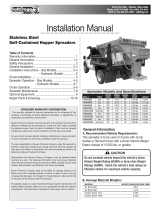 Salt Dogg 1400475SS Installation guide
Salt Dogg 1400475SS Installation guide
-
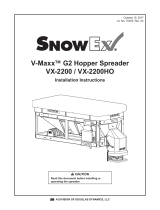 SnowEx V-Maxx G2 VX-2200HO Installation Instructions Manual
SnowEx V-Maxx G2 VX-2200HO Installation Instructions Manual
-
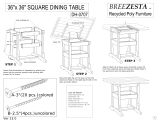 Breezesta Square Dining Table Assembly Instructions
Breezesta Square Dining Table Assembly Instructions
-
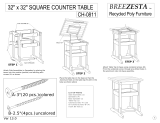 Breezesta Square Counter Table Assembly Instructions
Breezesta Square Counter Table Assembly Instructions
-
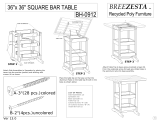 Breezesta Square Bar Table Assembly Instructions
Breezesta Square Bar Table Assembly Instructions
-
 Breezesta Square Dining Table Assembly Instructions
Breezesta Square Dining Table Assembly Instructions
-
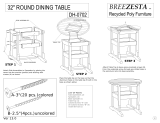 Breezesta Round Dining Table Assembly Instructions
Breezesta Round Dining Table Assembly Instructions
-
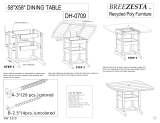 Breezesta Square Dining Table Assembly Instructions
Breezesta Square Dining Table Assembly Instructions
-
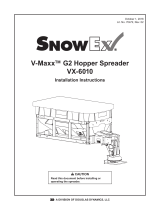 SnowEx V-Maxx G2 VX-6010 Installation Instructions Manual
SnowEx V-Maxx G2 VX-6010 Installation Instructions Manual
-
 Buyers Salt Dogg 1400300SS Owner's manual
Buyers Salt Dogg 1400300SS Owner's manual

























